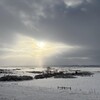Seemingly overnight, the coronavirus dramatically altered every facet of life on this planet. One area particularly hard hit is education. According to UNESCO, 192 countries had closed all schools and universities by April 2020, affecting more than 90% of the world’s learners — almost 1.6 billion children and young people.
Here in the Northwest, Adventist education has not gone unscathed. And yet, there remains a silver lining through the rapid shift to emergency remote learning.
Kyle Pepple teaches math at Cascade Christian Academy in Wenatchee, Washington. “We were in staff meeting starting to discuss what we were going to do if we needed to shut down,” Pepple says. “That’s when we received the news that the governor had just announced that all Washington schools were closing the following week. We had two days to figure out our game plan — 'OK, now what do we do?'”
CCA educators were not alone in the scramble to shift classroom learning to digital remote learning. Schools of every size in all six NPUC conferences were affected.
Boyde Hosey is the principal teacher at Baker Adventist Christian School in eastern Oregon. The two-teacher school literally had to make the jump overnight. “I thought we’d be closed for a couple of weeks, until after spring break,” Hosey says. “Boy, was I wrong!”
While the first few days may have been a little messy, teachers bent over backward to ensure students continued learning in spite of being physically banned from their classrooms. For many educators, the first few days involved a herculean amount of research. What tools and resources would best serve not only the learning objectives for the class but also the individual learning needs of their students?
Larger schools tasked teams of tech-savvy teachers to look at what would serve student learning best and made recommendations to the rest of the staff. The NPUC conferences and union education leaders also worked to make recommendations and sought to encourage and support the smaller schools during this radical pivot.
A bright spot in the scramble to find resources and new digital ways to facilitate learning is that many Northwest Adventist educators were already using online learning tools as part of their daily curriculum.
Nelita Davamony-Crawford, principal at Emerald Christian Academy in Pleasant Hill, Oregon, talks about her team’s challenges during the early days of the shutdown. “The technology was hard. It was a little chaotic starting out,” she explains. “Making sure to get resources to all our families was initially a challenge too.”
When asked about the pivot to emergency remote learning, Pepple said, “We’re all in a different boat but the same storm. It certainly was a learning process. I was working with unfamiliar technology. For example, I started a YouTube channel and had to figure out the logistics of Google Classroom and meetings.”
Pepple went on to describe the process. “Initially I made my own videos of my math lessons," he said. "I quickly learned I needed do more and began meeting remotely with the kids, trying to figure out what the best way to teach to the kids.”
“I was blessed,” Pepple adds. “There is a really great team that is more tech-savvy than I am, and they spent time figuring so many things out. My job was trying to find what worked with my specific teaching style and the kids that I have in my classroom.”
Brian Harris, Upper Columbia Conference education vice president says, “Our teachers have really met the challenge. They are true heroes! Not only did they have to flip the switch overnight into this new paradigm, but they did so while maintaining the uniqueness and strength of Seventh-day Adventist education.”
Harris went on to say reaching students with the Seventh-day Adventist message of hope and wholeness has taken on even greater significance looking back over the last few months of the school year.
“While many neighboring schools struggled to make this switch,” says Harris, “we really pivoted quickly and with little disruption in continuous learning for our students. In addition, our schools did a brilliant job of making sure there was equity and access to learning opportunities for all students. No student was left behind.”
The rapid move to emergency remote learning that Northwest Adventist educators made came with a price. Ron Jacaban, principal at Washington's Puget Sound Adventist Academy, put it succinctly: “I don’t think our teachers have ever worked harder. What has been a 10-hour day has become a 12-hour day.”
“This has been so much more work for teachers,” says Brian Hays, who teaches second grade at Hood View Adventist School in Boring, Oregon. “All of us teachers are here at school four days a week, even though this is remote education”
The added effort by teachers goes beyond sending individual emails to students and parents. It involves seeking creative ways to keep kids engaged and curious when they are trying to at home, disconnected from their classmates and teacher.
This extra work has taken on many forms. One teacher in Washington conference, d’Ann Jacaban, has made more than 300 YouTube videos for her kindergarten students.
The hard work has also showed up in ways teachers reach out to students and families. At Emerald Christian Academy teachers used a gift of bread to show their students and families they cared about them even though the classroom doors were closed. At the beginning of the shutdown, a local bakery donated bread to hand out to families as they came to pick up desk and locker items.
One of the discoveries Adventist educators have made during this time is understanding the necessity to create emotional space for students to learn, even when they are studying in the safety of their own home. “This happens in the classroom any time a student suffers trauma,” says Davamony-Crawford. “Making sure kids have the heart and brain space to receive new knowledge is critical. COVID-19 affected our families differently. However for many, it brought many new stressors into students’ lives.”
School closures took families for a rollercoaster ride. Northwest Adventist educators found themselves conscientiously shifting away from academics early on in order to first establish connection with their students. In addition to connecting with students, teachers had to find ways to minister to parents too.
“This hit our families differently,” says Davamony-Crawford. “For some, it is the break some families needed. It’s been a time of restoration, a time to focus on things consistently put on the back burner. For other families, this has been a hurricane. They’re having to manage depression, loss of jobs, fear and loss of family members. The divergence of experience is quite stark.”
“I’m really proud of my teachers,” she adds. “They stepped up to the plate and asked what does it look like to interact with our students and families in a way serves them. Children aren’t isolated from their family, especially when many parents have been laid off or are working from home. We have to engage with the entire family.”
The feedback from families during the coronavirus school closures has been especially rewarding for some schools. “It’s been nothing short of amazing for us,” says Jacaban. “We’re getting comments, cards and letters. The biggest compliment though is that parents are telling their neighbors. We’re getting calls from people with no church affiliation who are calling us because they want to send their kids to our school now because of what they are hearing from our families.”
Has it been easy? The simple answer is no. Teachers and students alike miss the personal social interactions that occur in a classroom.
“Every day I get an email from a little fifth grade girl,” says Hosey. “Every day she writes me and says, ‘I love my teacher. Where are you?’”
According to an article published by the Brookings Institute, when children lose out on education, they lose out on future opportunities with far-reaching consequences. Some modeling suggests that the loss of learning during the extraordinary systemic crisis of World War II still had negative impact on former students’ lives some 40 years later.
The silver lining that shone through the COVID-19 clouds is one of dedication to the whole person. Our Adventist teachers weren’t just concerned about getting a worksheet uploaded to Google Docs so their students would keep busy. During the last three months of school, they took the time to custom-build learning experiences that met the whole needs of each of their students. They looked for creative ways to stay connected and social in the midst of social distancing.
“I’m so proud of our teachers,” says Dennis Plubell, NPUC education vice president. “In the fast transition to emergency remote learning, Adventist teachers maintained a commitment to whole-student education, a foundational principle of Adventist education. Northwest teachers innovatively adapted online worships and chapels, tirelessly working to meet student and family emotional needs, while identifying and prioritizing core learning goals. It was amazing to see the creative ways teachers engaged students in connecting with the class and with their lessons remotely.”
In the end, the silver lining is what’s always made Adventist education an exceptional learning experience. Adventist teachers approach education as a ministry — even when their classrooms are ripped away.











